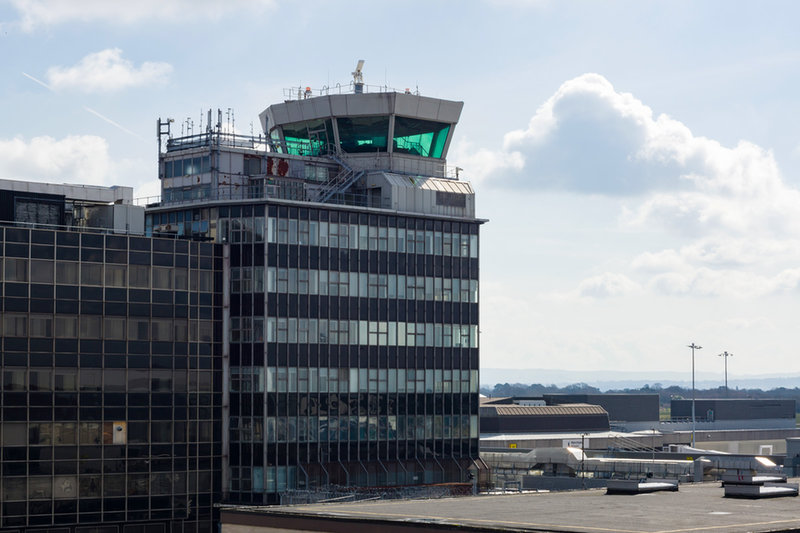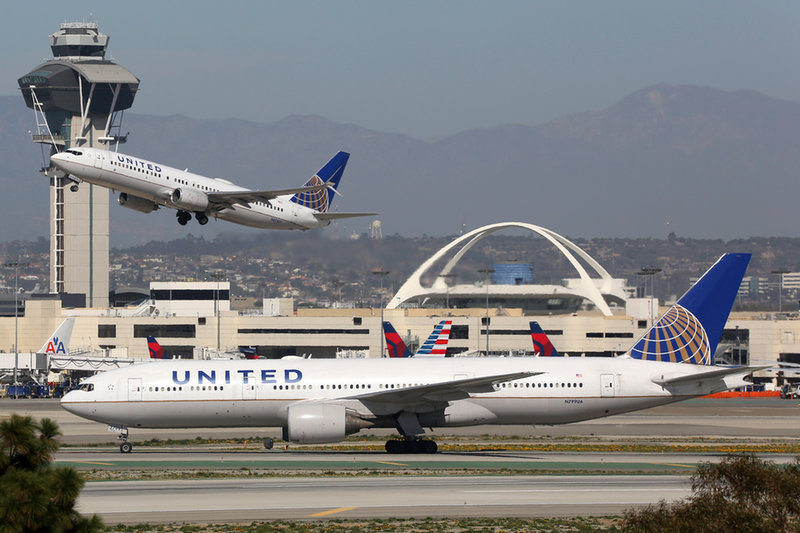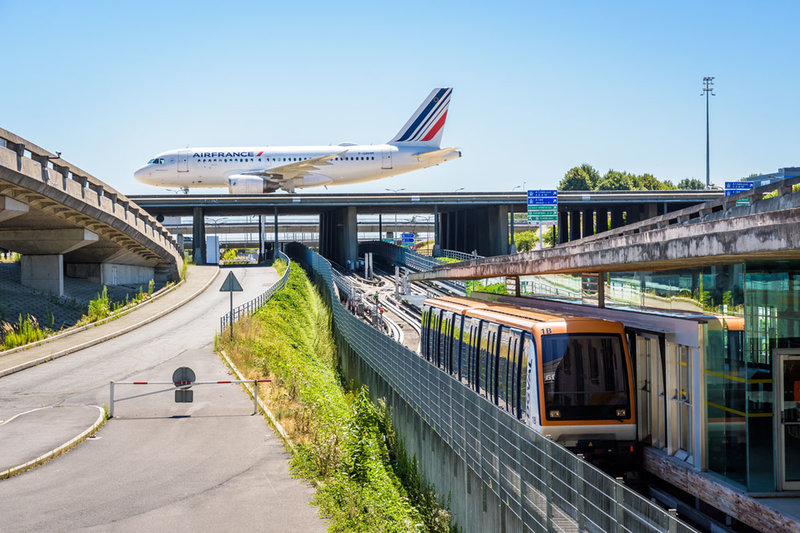Covid-19
Airport Covid-19 relief measures: international responses to a worldwide crisis
A year into the Covid-19 pandemic, the aviation industry and airports have emerged among the worst hit, prompting governments around the world to help them get back on their feet. Ilaria Grasso Macola finds out what measures have been put in place by different countries.
Image: copyright
According to data from the Airports International Council (ACI), compared with initial projections, the pandemic caused a loss of six billion passengers last year, a decline of 64.2%. This has led to huge economic repercussions for airports around the world, especially in the two most impacted regions, Europe and the Middle East.
ACI predicts that in 2020, global airports experienced a revenue reduction of 65%, totalling $111.8bn (£81.1bn). In Europe, airports had a revenue shortfall of $40.8bn (£29.6bn), while in the Middle East revenues fell by 73.5%.
World governments have reacted in two main ways, with some offering airport-specific recovery plans while others had a broader approach and focused on helping the wider sector.
UK – airport funds come after industry outcry
The UK Government launched a support scheme earlier this year specifically tailored for airport recovery.
The scheme, launched on 29 January, stated that English airports and ground handlers are eligible to receive up to £8m ($11m) each to cover Covid-19-related losses, including the cost of airfield operations, contracted services and business rate bills.
All applicants needed to have a commercial licence dating back to no later than 24 November 2020, operating at least 12 scheduled commercial flights. They also need to show proof of their coronavirus-related economic losses during the application process, which ended on 21 February.
“A thriving aviation industry has been central to the success of this country and while we recognise the testing conditions airports are currently facing as a result of the pandemic, I believe that the sector will be ready to bounce back once restrictions are lifted,” commented UK Transport Secretary Grant Shapps.
“Today’s scheme is another step in the right direction, providing vital support for an industry that is raring to get back to business, once it is safe to do so.”
The scheme comes after almost a year of industry lobbying. In March 2020, industry stakeholders pleaded with the government for sector-specific relief measures but, after initially being open to the possibility, Downing Street did a U-turn, opting for a case-by-case approach.
An urgent package of support must materialise.
Airport Operators Association chief executive Karen Dee said the industry was “disappointed” by the decision, asking the government to reconsider and offer a comprehensive support package.
“The UK Government’s decision to take a case-by-case approach with dozens of UK airports is simply not feasible to provide the support necessary in the coming days,” she said at the time. “Not only does the decision today leave airports struggling to provide critical services, it will hamper the UK recovery.”
In the following months, the industry lobbied with the government for a support package on several occasions. Manchester Airports Group CEO Charlie Cornish wrote an op-ed on Passenger Terminal Today lamenting the government’s mishandling of communications with the sector and the lack of a recovery plan.
“Promises of specific support in recognition of this predicament were publicly made by government, but never materialised,” he wrote. “While the suggestion that aviation has had dedicated support has been regularly repeated by ministers, in reality, this consists of nothing more than the furlough scheme, which – though welcome – has been available to all businesses.”
“An urgent package of support must materialise. […] Now is the time for government to step off the side-lines and take the action that is so desperately needed.”
Governments in Northern Ireland and Scotland have adopted similar measures, such as extending non-domestic rate relief for Scottish airports and providing £10m funding for Belfast airports.

The control tower at Manchester airport it is the third busiest airport in the United Kingdom. Credit: D. Pimborough / Shutterstock.com
US – between old and new stimulus packages
Both the Trump and the Biden administrations have focused on offering aviation a roadmap to recovery, including airports in their stimulus packages.
In March 2020, President Trump signed the Coronavirus Aid, Relief and Economic Security (CARES) Act – a $2.2tn (£1.6tn) stimulus package to help the economy get through the pandemic. Aviation – one of the hardest-hit sectors – received $61bn (£44bn), of which $25bn (£18.1bn) was allocated to airlines.
A month later, Transportation Secretary Elaine Chao announced that, through the CARES Act, $10bn (£7.25bn) would go specifically to commercial and general aviation airports. The package aimed to support operations and make up for lost revenues.
“This $10bn in emergency resources will help fund the continued operations of our nation’s airports during this crisis and save workers’ jobs,” Chao said.
After the 2020 presidential election, many in the industry wonder if the new administration would include aviation in its recovery plan.
On 11 March 2021, the White House signed off a $1.9tn (£1.38tn) relief package, including $14bn (£10.1bn) for airlines, as well as $9bn (£6.5bn) for airports and other businesses specifically.
As reported by the New York Times, the Biden administration granted airports an additional $8bn to help them operate whilst limiting the spread of Covid-19.

LAX airport in Los Angeles, California. Credit: Markus Mainka / Shutterstock
EU – different measures for different countries
The EU adopted a “different measures for different countries” approach when it came to helping the sector get back on its feet. While the European Commission (EC) approved temporary measures to maintain the industry afloat, including ground-handling services, other countries’ approaches were not unilaterally focused on airport recovery.
In August 2020, Germany received the EC’s approval of an aid scheme to support airports during the pandemic.
The scheme – which was open to all German airports’ operators – allowed authorities at all levels to compensate for Covid-19 revenue losses in the form of direct grants and guarantees on loans, as well as subsidised interest rates and deferral of taxes.
“This scheme will enable German authorities at different levels to compensate German airports for the damage suffered as a result of the coronavirus outbreak,” said executive vice-president Margrethe Vestager, who is in charge of competition policy. “At the same time, it will help them address their liquidity shortages and weather the crisis.”
It’s very worrying that the Italian Government left airports out.
Assaeroporti, Italy’s national airport operators’ organisation, has recently criticised their government’s decision to leave out airports from the country’s recovery plan.
“It’s very worrying that the Italian Government left airports out of the Next Generation EU programme,” said Assaeroporti deputy vice-president Fulvio Cavalleri to a parliamentary transport commission audit on 4 February 2021.
“Airport operators operate as state agents, dealing with the management and development of infrastructure, ensuring an essential public service,” he added. “Every investment finalised to the development of airports contributes to improve and widen the state’s infrastructure system.”
The French Government opted to focus more on airlines and launched a scheme to compensate airlines for part of the damages caused by the pandemic.
The scheme, which was open for airlines with a licence to operate in France, allowed operators to defer payments of certain aeronautical taxes, enabling them to pay them over two years.
“This is the first state aid measure notified to us by a member state aiming to mitigate damages to the airline sector,” said Vestager at the time.
“Together with member states, we are working to ensure that possible national support measures to tackle the outbreak of the virus can be put in place as quickly and effectively as possible, in line with EU rules.”

An Air France airliner rolling on a taxiway bridge at Paris-Charles de Gaulle Airport. Credit: olrat / Shutterstock.com